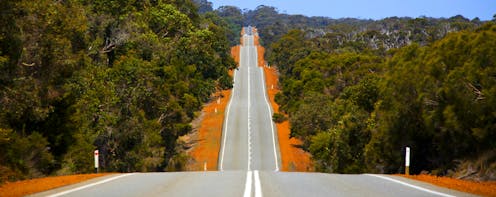The big stimulus spending has just begun. Here's how to get it right, quickly
- Written by Richard Denniss, Adjunct Professor, Crawford School of Public Policy, Australian National University

Responding to COVID-19 required governments to make hard choices with enormous consequences. The biggest were whether to let the disease rip, lock it down, or strike out in search of a middle ground that delivered the best of both worlds.
Different leaders made different decisions and will ultimately be judged by their citizens and historians. But it’s not just in health that COVID-19 requires choices with enormous consequences – it’s also in spending.
Two months ago the government announced a A$17.6 billion[1] coronavirus stimulus package. Remember when that was a lot[2] of money?
Since then it has committed to spend an extra[3] $200 billion[4].
$200 billion has become base camp
Should we just let the government rip through hundreds of billions more in an attempt to quickly stimulate the economy? Should we put all proposed spending through lengthy cost benefit analyses and parliamentary inquiries?
Or is there some sort of middle path?
In a new paper by The Australia Institute, Design Principles for Fiscal Policy in a Pandemic[5], Matt Grudnoff, David Richardson and I set out eight criteria on which to judge spending proposals in order to expedite public and parliamentary scrutiny.
Read more: It's just started: we'll need war bonds, and stimulus on a scale not seen in our lifetimes[6]
While not all voters will be able to agree on what the most pressing problems are, presumably all voters agree that when it comes to spending vast amounts of public money it is important to have some clear criteria against which voters can subsequently judge the necessarily rapid decisions that are made.
The first two are for stimulus spending to be large in size and speedy in implementation.
The other six use economic theory to help maximise benefit for bucks.
Target households with high marginal propensity to consume
Low income households have a higher “propensity to consume’” than wealthier families who can afford to save some of what they receive. Saved stimulus does nothing to increase demand and employment in the short term.
Direct government spending on goods and services is another way to ensure that money is spent quickly.
Target domestic production
Money spent on imported cars, imported electronics or imported capital equipment will diminish the local benefits of stimulus spending.
Target activities with high employment intensities
Some industries create more direct and indirect jobs per billion dollars of spending than others. Capital intensive mining and construction projects, for example, create far fewer jobs per billion dollars spent than spending on health and community services.
Target those most hurt by the crisis
When considering stimulus spending the government should focus on projects that provide employment opportunities to individuals in industries most affected. Two of these are tourism and hospitality. While such an approach is equitable, it is also efficient as it helps ensure that the skills of the newly-unemployed match those needed by needed by new projects.
Target regions that are most disadvantaged
Building new train lines in NSW might be a good long run investment for the country, but it will do little to create jobs for tourism workers who have lost their jobs in Queensland. Stimulus spending targeted at the regions most effected will be the most likely to socak up unemployment.
Target useful projects that deliver benefits
When considering stimulus spending the government should think about what we want more of after the crisis has ended. An example from an earlier stimulus program is the ocean baths that dot the NSW coastline.
Many were built in order to generate employment during the great depression[7], yet almost 90 years later we are still enjoying the additional secondary benefits.
Most good projects will meet most of the criteria
While not all good projects will meet all of the criteria spelt out above, most good stimulus projects will meet most of them.
The enormity of the discretionary spending that the Morrison government is about to undertake on our behalf is almost impossible to fathom.
In a normal year the Commonwealth spends $500 billion on all of its services.
In the past two months alone it has committed to spend an additional $200 billion, and it hasn’t even started on the extra spending that will be needed to restore economic health as restrictions unwind.
Read more: Look beyond a silver bullet train for stimulus[8]
The enormity of the spending that will be needed means that, more than ever before, the decisions it makes over the next few months will determine our economic success for decades to come.
For all our sakes it is important it gets these decisions right.
Using principles we have set out for assessing the myriad of potential projects it will consider will give it the best chance to make the biggest difference, and give us some confidence that even though decisions are being made quickly, they are being made well.
Matt Grudnoff, Senior Economist at The Australia Institute, contributed to this piece.
References
- ^ A$17.6 billion (theconversation.com)
- ^ a lot (ministers.treasury.gov.au)
- ^ an extra (theconversation.com)
- ^ $200 billion (theconversation.com)
- ^ Design Principles for Fiscal Policy in a Pandemic (www.tai.org.au)
- ^ It's just started: we'll need war bonds, and stimulus on a scale not seen in our lifetimes (theconversation.com)
- ^ great depression (www.abc.net.au)
- ^ Look beyond a silver bullet train for stimulus (theconversation.com)
Authors: Richard Denniss, Adjunct Professor, Crawford School of Public Policy, Australian National University












